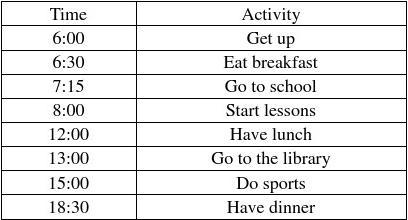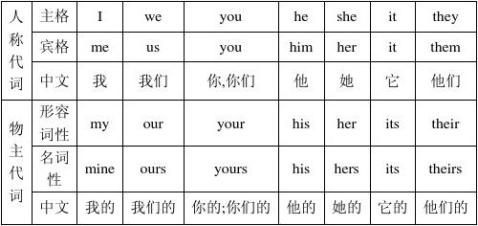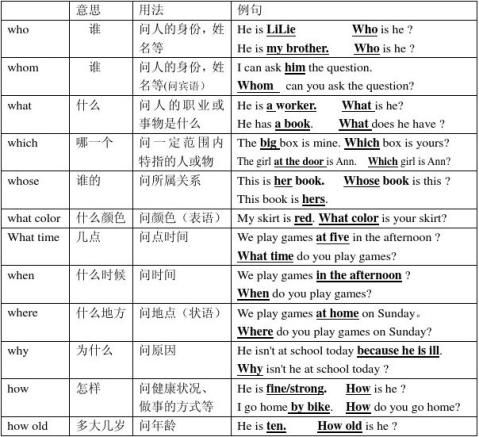七年级英语语法----时态(一般现在时 现在进行时 一般过去时)学习手册
在七年级英语学习中我们主要学习了3种时态,即一般现在时 现在进行时 一般过去时。今天我们就将这3种时态进行对比学习。Come on my friends!
一、 一般现在时
定义:表示经常、反复发生的动作,经常存在的状态或者习惯性动作(有时间规律发生的事情)的一种时间状态。(很拗口,但要学会就必须深刻体会,so please 将其狂读3遍) 具体用法
1、 表示经常的或习惯性的动作,常与表示频率的时间状语连用。(always, usually, often,
sometimes, every day\ morning\ night\ evening\afternoon\week,)
e.g. I go to school at 8:00 every morning.
2 表示主语具备的性格、能力、特征和状态及喜好等。
e.g She is 11 years old .
I don’t like English.
She can speak English well.
3 表示客观事实和普遍真理。
e.g The earth moves around the sun.
基本结构构成
含有be(am、 is 、are)动词的用法
肯定句:I am+其它
You \ they\ we are +其它
She \he \ it+is +其它
否定句: I am not+ 其它。
You \ they\ we are not +其它
She \he \ it+is +not +其它
一般疑问句及回答:
Are you +其它?
肯定回答:yes, I am. 否定回答:no, I am not.
Are you\ they\ you+ 其它?
肯定回答: yes,we \they are. 否定回答:no, we \they are not.
Is she\ he \it+其它?
肯定回答: yes,she \he \it is. 否定回答:no,she \he \it is not.
从上面结构中你能总结出be动词的用法吗?单数________,复数_________ ;_________,你用__________ , ______________-连着她他它。
含实义动词的结构:肯定句:
我用
主语(I, we, you,they,)+动词原形+其它。
否定句:
主语(I, we, you, they)+don’t +动原+其它。
一般疑问句:
Do +主语(you ,they)+动原+其它?
肯定回答; Yes,主语( I, we,you,they)+do.
否定回答: No, 主语(I ,we, you, they)+don’t.
e.g. They get up at 6:00 every day.你能帮它改个造型吗?
否定句:_________________________
一般疑问句___________________________
同志们回忆一下还有什么特殊情况我们还没讲到。
当主语为第3人称单数时
肯定句 主语(she, he ,it) +动词三单+其它 She plays chess well.
否定句 主语(she, he ,it)+doesn’t + 动词原形+其它。 She doesn’t play chess well. 一般疑问句 Does +主语+动词原形+其它?Does she play chess well?
肯定回答 Yes, 主语+dose Yes, she does.
否定回答 No, 主语+doesn’t No,she doesn’t
特殊疑问句 特殊疑问词+一般疑问句? What does she play well?
e.g. Mr. Yang teaches us math.
否定句:_________________________
一般疑问句:___________________________________
肯定回答_______________________________________
但是你们知道动词第三人称单数的变化规则吗?
1、一般情况加S, e.g like---likes swim---swims
2、以s, x, sh, ch,及o 结尾的词加es . e.g. watch—watches
3、以辅音字母加y结尾的词,要变y 为I 再加es. E.g. study---studies
你记住上面的规则了嘛,接下来我们小试身手
.一、 句型变变变。这些句子要求 “变脸”,你能满足它们吗?
1. Jeff has lunch at school. (改为一般疑问句)
Jeff 2. They have an English class every day.(改为否定句)
They_____ _____an English class every day.
3.I am your English teacher.(改为一般疑问句 )
_________ you our English teacher.
4.Jim does his homework every day.(改为否定句)
Jim ____________________.
二、.单词“化妆会”。小小单词就要登台演出了,你能帮助化妆吗?
1. He doesn’t play sports, he only w______ them on TV.
2. .Tom _______(有)some English books.
3.The boy _________ (not have) breakfast.
4..Does your father _____(like)sports?
二、现在进行时
定义:用来表示现在(说话瞬间)正在进行的动作和用来表示当前的活动或现阶段一直在进行着的动作。
【注意】一些表示状态和意愿的动词,如be,like,want,know ,think,have等,不能用于现在进行时态中。如,I want to go home now.
现在进行时的构成
现在进行时由"be+v-ing"构成。be并不是助动词,而是am is are 这三个be动词。初学者最容易漏掉,它应与主语的人称和数保持一致。所以你们一定记好了,进行时的两重要部分,be动词和v-ing这两者缺一不可。(be动词的选择相见前面be动词的用法)
现在进行时的应用
在实际运用时,现在进行时常用以下几种情况:
(1)当句子中有now时,常表示动作正在进行,这时要用现在进行时。如:
They are playing basketball now.现在他们正在打篮球。
(2)以look, listen开头的句子,提示我们动作正进行,这时要用现在进行时。如:
Listen!She is singing an English song.听,她正在唱英语歌。
(3)表示当前一段时间或现阶段正在进行的动作,且此时有this week, these days等时间状语,这时常用现在进行时。如:
We are practicing spoken English these days.这些天我们在练习英语口语。
(4)描述图片中的人物的动作,也为了表达更生动。此时也常用现在进行时。如:
Look at the picture. The children are flying kites in the park.看这幅图,那些孩子正在公园放风筝。
现在进行时的结构
肯定句式:主语+be( am, is, are)+现在分词+其它. She is playing che-ss now.
否定句式:主语+be(am, is, are) +not +现在分词+其它. She is not pl-aying chess now.
一般疑问句:Be(am, is, are) +主语+现在分词+其它?Is she playing ch-ess now?
肯定回答:Yes,主语+be. 否定回答:No,主语+be not
特殊疑问句:疑问词+be(am, is, are)+主语+现在分词+其它?
现在分词的构成规则:
1直接在动词原形末尾加-ing,如play-playing work--working
2以不发音字母e结尾的动词,去e再加-ing,如have-having write--writing 3以重读闭音节结尾的单词,结尾只有一个辅音字母,应双写这个字母,再加-ing。如,begin-beginning sit--sitting
4.特殊变化: lie-lying,
接下来检验一下大家学习成果
一、(写出动词的ing形式) For example: do doing
1. clean_______ 2. work_______ 3. watch_______4 go_______ 5. play_______6 study_______
swim_______13. sit______14. shop______15. stop_____
二、.“火眼金睛”。你能排除干扰,从下面的四个选项中,找出一个正确的答案吗
( ) 1. She is ___ a sweater today.
A. putting on B. puts on C. wearing
( ) 2. I ___ to go home now.
A. want B. wants C. to want D. am wanting D. wears
( ) 3. The boy isn’t ___ the teacher.
A. listen B. listening C. listenning to D. listening to
( ) 4. Listen! She ___ in the classroom.
A. sing
B. sings C. singing D. is singing
( ) 5. My parents often ___ TV in the evening.
A. watch B. see C. look D. look at
( )6.----Where’s Jennifer?
in the river
A.swims B.is swimming C.waiting for D.swimming
三 一般过去时
定义:
一般过去式表示过去某个时间里发生的动作或状态,过去习惯性、经常性的动作、行为;
时间状语
(two hours, one year… )ago, yesterday, the day before yesterday, last (week, year, night, month…), 具体时间, just now, at the age of… , one day, long ago, once upon a time(很久以前), etc.
动词变化规则
规则动词的过去式变化如下:
(1)一般情况下,动词词尾加 -ed
如:worked played wanted acted
(2)以不发音的 -e 结尾动词,动词词尾加 –d
如: lived moved hoped
(3)以辅音字母 + y结尾的动词,把-y变为-i 再加-ed
如: studied tried cried
(4)以一个辅音字母结尾的重读闭音节动词,双写词尾辅音字母,再加 –ed
如: stopped shopped planned
常见的不规则的动词过去式:
go-went do-did is-was are-were have/has-had buy-bought meet-met say-said fly-flew come-came know-knew read-read write-wrote spend-spent swim-swam become-became run-ran begin-began find-found take-took
teach-taught tell-told stand-stood put-put feel-felt make-made see-saw grow-grew get-got sit-sat catch-caught bring-brought 朋友们,抓紧时间记吧!
基本句型结构 1)含实义动词的一般过去时
肯定句 主语+ 动词过去式+其它 She played chess last night.
否定句 主语+ didn’t +动词原形+其它 She didn’t play chess last ningt.
一般疑问句 Did+ 主语+动词原形+其它?Did she play chess last night?
肯定回答 Yes,主语+did. Yes ,she did.
否定回答 No,主语+didn’t. No,she didn’t.
特殊疑问句 特殊疑问词+ 一般疑问句?What did she do last night? 2)be动词的一般过去时
肯定句 主语+was\ were+其它 She was 11 years old last year.
否定句 主语+was\ were+not+其它 She was not 11years old last year.
一般疑问句 Was\Were +主语+ 其它? Was she 11years years old last year? 肯定回答 Yes ,主语+was\were. Yes,she was.
否定回答 No,主语+was\ were +not No, she was not.
练练吧

Wang Hong and Zhou Jian come from China.Now they are studying in New York.Yesterday morning they at six o’clock.
They at six thirty.Then they at seven fifteen.School started o’clock.They at twelve.At one o’clock in the afternoon.they They did sports in the afternoon.They played tennis for two hours.At six thirty they .They at seven thirty in the evening.They went to bed at ten thirty.They very busy all day.
1.____________ 2.____________ 3.____________ 4.____________
5.____________
6.____________ 7.____________ 8.____________ 9.____________
10.____________
二、句型转换
\1.My mother has a busy weekend every week.(用last week改写)
My mother ____________ a busy weekend last week.
2..(对画线部分提问)
____________ ____________ he ____________ yesterday?
3.对画线部分提问)
____________ ____________ your weekend?
4.He reads a book about history every day.(用last year改写句子)
He ____________ a book about history last year.

第二篇:最全的人教版七年级英语语法总结
七年级语法总结
1、目前所学的动词的形式有4 种:
①动词原形;如:do;have;like
②动词的单三式(常在动词原形后加s);如:get-gets
③动词不定式(to+动词原形);如:meet-to meet
④动词ing式(动词原形后加ing)如:look-looking
2、表示征求意见或建议邀请的礼貌用语
Would you like +to+动词原形? (你想要??吗?)
How about+动词ing ?(??怎么样???好不好?)
What about +动词ing? (??怎么样???好不好?)
Why not +动词原形? (为什么不??呢?)
Why don’t you +动词原形 ?(你为什么不??呢?)
Let’s +动词原形.(让我们??吧。)
表示同意、答应:①Yes,I’d like to./Oh,I’d love to.
②All right/OK.③Great!④Sure.⑤Good idea!⑥Thanks.I’ll be glad to ⑦Thanks.That would be very nice.⑧I’d like that.
表示不同意、拒绝:①No,thanks.②Sorry,I can’t.
③I’d like to.But I’m afraid I can’t/I have no time.
3、目前学过的情态动词有can, may,could,would和will等五个。
学好情态动词必须把握三个用法:
①后必须跟动词原形 ;
②没有三单式(其后不能加s);
③可以把情态动词提到句首构成疑问句;
可以在情态动词后面加上not构成否定句。
4、目前学过的后跟动词不定式(to+动词原形)的有:
①would like to+动词原形(想要做某事);
want to+动词原形(想要做某事);
②forget to+动词原形(忘记要做某事);
③like to +动词原形(喜欢做某事);
love to +动词原形(喜欢做某事)
④ask sb. to +动词原形.(请/叫某人做某事)
tell sb. to +动词原形.(告诉/叫某人做某事)
would like sb. to +动词原形.(想叫某人做某事)
want sb. to +动词原形.(想叫某人做某事)
⑤have to +动词原形(必须/不得不做某事)
⑥Nice/Glad/happy to +动词原形(很高兴做某事)
如:Nice to meet you.
I’m glad to be here.
5、
①情态动词:can,may,could,would,will后;
②助动词do,don’t,does,doesn’t后(does,doesn’t一出现,三单式要滚蛋);
③动词please(请)后:如:Please tell him about the picnic.
④短语Why not…/Why don’t you…后;
⑤动词let 后;如:Let Jane help you. Let’s go home.
⑥动词help后,也可带to;如:Let’s help Maria (to) carry water.
⑦祈使句以动词原形开头,如:Have a seat , please.请坐下。
6、的有:
①Be动词后的动词;如:Are you kidding? I. ..............
. ...
②所有的介词后;已学过的介词有:at,for,about,in,on,from,of,to,with,after等。 如:What about +动词ing? —Whatabout flying a kite with me ? ......
动词ing? — fishing this Sunday? .....
It’s time going..... home=It’s time to go home. .......me=Thank you for your help..
③go +动词ing——go fishing去钓鱼; go shopping去购物
④do some shopping购物
⑤like/love +动词ing (喜欢做某事)
7、有单复数变化的词
①名词
(1) 名词单数变复数的方法
1)大部分在词尾加s.如:dog---dogs
2)以-s, -x, -ch, -sh 结尾的加es. 如:
class---classes bus---buses glass---glasses
box---boxes watch---watches(手表)
fish---fishes
3)以“辅音字母+ y”结尾的,变y为i,加es.
baby---babies(婴儿) family---families(家庭)
study---studies(书房) fly---flies(蝇子)
注意:boy ---boys play---plays toy---toys
way---ways monkey---monkeys
4)以 f, fe结尾的,变f, fe为v,加es.
half---halves(一半) knife---knives(小刀)
yourself(你自己)---yourselves(你们自己)
(2) 特殊变化的词
1) a 变e: man—men(男子) woman—women(女子)
snowman---snowmen(雪人)
Englishman--- Englishmen(英国人)
Englishwoman---Englishwomen(英国妇女)
2) o变e:foot---feet(脚) tooth---teeth(牙齿)
3) 单复数同形:Chinese---Chinese(中国人) fish---fish(鱼)
yuan---yuan(人民币元)
4) mouse—mice (老鼠) child—儿童)
5)合成词中一般变后面的词:apple tree---apple trees(苹果树)
但下列需前后都变:man teacher---men teachers(男教师) 女医生)
6)集体名词,以单数形式出现,但实为复数。例如:people(人们)police(警察们)
本身就是复数,family指“全家人”时,本身也是复数,它们都不能加s. 如:The Chinese 中国人民都 很友好。
Kangkang’s family are all tall and thin.康康全家人都又高又瘦。 ②be动词: 单数am, is; 复数are ③行为动词:复数:动词原形
单数:在行为动词后加s或es(即动词的三单式)。 如: Maria(likes是三单式,为单数) ....Maria and Jane(like是动词原形,为复数) ...........④指示代词 单数:this这个 that那个
复数:these这些 those那些
8.名词+’s所有格
单数名词后直接加 “ ’s ”:
Jim’s coat 吉姆的外套 Jeff’s mother杰夫的妈妈 以s结尾的复数名词,只加“’”
Teachers’ Day教师节 the twins’ books双胞胎的书 不以s结尾的不规则的名词复数,加“ ’s ” Children’s Day 儿童节 men’s shoes男式鞋 表示两者共同拥有时,只在最后一个名词后加’s
Lucy and Lily’s mother 露茜和莉莉的妈妈(共同的妈妈,一个妈妈) 表示两者各自拥有时,要在每个名词后加’s
Lucy’s and Kate’s rooms 露茜和凯特的房间(各自的房间,两间房子)
9、人称代词和物主代词表

用法:
①人称代词主格:作主语,常放在句首;
②人称代词宾格:作宾语,放在动词和介词后; ③形容词性物主代词:后有名词时,用形容词性;(有名则形) ④名词性物主代词:后无名词时,用名词性。(无名则名)
10.句子的成分
①主语:是句子要说明的人和物,是动作的发出者,是句子的主体,一般放在句首。主语由名词,代词担任。
②谓语:说明主语的动作。只有动词才作谓语,一般放在主语之后。
③宾语:是动作的接受者。放在动词或介词后。由名词,代词担任。如: often at home on Sunday.
主语 谓语 宾语
11. 三单问题
①总则:主语是第三人称单数时,动词(谓语)要用三单式。如:
He gets up at six。 由于主语He是第三人称单数,动词get后要s,即gets是三单式。 ②可以作第三人称单数主语(三单主语)的有:(1)he, she,it;(2)单个的人;单个的物。 ③动词三单式的构成
(1)特殊的:be—is have—has
(2)有规律的:1)大部分在词尾加s; 如:
get—gets take--takes need-needs know—knows
2)以s, x,ch, sh,o 结尾的加es; 如:
guess—guesses(猜) watch--watches(看) teach―teaches(教) fish-fishes(钓鱼) go-goes(去) do-does
3)以“辅音字母+y”结尾的,变y为i,加es. 如:
study→studies(学习) fly→flies(飞,放)
carry→carries(提) worry—worries(担心)
注意:buy-buys say-says play-plays
12.特殊疑问句
特殊疑问词的用法

how many how much how far how soon how long多少 多少 多远 多久 多久跟复数名词, 问数量 跟不可数名词 问数量或价钱 问路程 问 in+一段时间 问一段时间, 问物体的长短There are thirty boys in my class. How many boys are there in your class? There is some milk in the bottle. How much milk is there in the bottle? It's five kilometers away from here How far is it from here? He can finish it in half an hour. How soon can he finish it ? He has lived here for a year. How long has he lived here? The desk is one meters long. How long is the desk ? I go to see my parents once a month. How often do you go to see your parents?how often多久 (一次)问频率对画线部分提问,除了要注意选择正确的疑问词外,还要注意语序的运用。1、 对句子的主语提问,其语序是: 疑问词+谓语+其他成分?(整个句子是陈述句语序) She主语is谓语their teacher.Who is主语 谓语their teacher?2、对句子主语的定语部分提问,其语序是: 疑问词+主语(即定语所修饰的名词)+ 谓语+其他成分?(整个句子是陈述句语序) My主语的定语book主语is over there.谓语Whose book is over there ?疑问词 主语 谓语以上两点方法都是:用正确的疑问词代替画线部分,再把句号改为问号,其余部分一般不做改变3.对表语或宾语的定语部分提问,其语序是: 疑问词+表语或宾语(画线部分所修饰的名词)+一般疑问句(省略画线部分和它所修饰的名词) I'm looking for my宾语的定语watch..宾语Whose watch疑问词 宾语are you looking for ?一般疑问句(省略掉 my watch)4、对表语、宾语或状语提问,其语序是: 疑问词+ 一般疑问句(省略掉画线部分)? He lives in Beijing .状语Where疑问词does he live ?一般疑问句(省略掉画线部分 in Beijing )5、对谓语和宾语提问,其语序是: 疑问词(What)+ 一般疑问句(其中谓语动词要用 do 的相对应形式代替, 省略掉宾语) He watches TV in the evening He watched TV yesterday evening. He is watching TV now. 否定句:;含有否定词 not 或 no 的句子。 What does he do in the evening? What did he do in the evening? What is he doing now?
改否定句的方法:先加后借 ①在句中找到Be动词(am, is, are)或情态动词(can,may,could,would,will),在它后面加not;②找不到以上词时,借don’t或doesn’t,放在动词前。
注意:句子是三单主语时,借doesn’t;不是三单主语时,借do.并且:doesn’t一出现,三单式要滚蛋。
13、冠词的用法
<1>a /an 不定冠词,表示“一个…”,放在单数名词前,指不确定的某一个;
<2> a 用在元音前(不是元音字母);an 用在辅音前(不是辅音字母)。如:(1) an English boy,an
apple,an orange, an egg , an eraser, an old monkey,
(2) an hour一个小时 half an hour 半小时 (hour中h不发音)
(3) a “ d”(一个d), an “i”, an “f”, an “x”, a “u”.
<3>the 定冠词,表示“ 这,那,这些,那些”,放在名词前,表示特指。
14.数 词
(一)、基数词
注意 eleven, twelve , thirteen, fourteen, eighteen, twenty, thirty, forty, fifty, one hundred/thousand等词的拼写。具体用法如:
middle School, 注意
1、“前有,后无;前无,后有”即 two hundred books , hundreds of books
2、如 eight-year-old 的词后面要加名词
3、“在某人几十岁时”用 in one’s +整十的复数 如:in her fifties, in their thirties
4、表示“ 多高、多宽、多长、多深,年龄少大、距离多远”时,用“数量+单位+形容词” 如:two months old, twenty meters deep
(二)、序数词
注意 first, second, third, fifth, eighth, ninth, twelfth, twentieth, twenty-first, ninety-ninth, one hundredth等词的拼写。 具体用法如:th(三)、分数, 小数和百分比:
分数的表达:分子用基数词,分母用序数词;分子大于一,分母加 s,分子和分母之间一般用连字号。 如3/5读作three-fifths, 1/3读作one-third
0.78读作zero point seven eight 7.45读作 seven point four five
45%读作 Forty-five percent 67%读作sixty-seven percent
注意:分数表示1/2, 可以用a/one half 表示;分数1/4,3/4也可以用quarter表示。如: 1/4读作one-fourth or a quarter, 3/4读作three-fourths or three quarters
Half of the students live in the school on weekdays. (习惯上省略a)
One- third of the students are on the playground.
Three-fourths of the earth is covered with water.
(四)、时间和钟点
7:15读作seven fifteen/ a quarter past seven
7:30读作seven thirty/half past seven
7:35读作seven thirty-five/ twenty-five(minutes)to eight
8:03读作 three minutes past eight
注意:如果分钟不是5的倍数,minute不能省略。
(五)、日期和年份
on March 8读作 on march the eighth on 8th of March读作 on the eighth of March in 1998读作 nineteen ninety-five, in 2008读作 in two thousand and eight
15.介词
一、介词一般位于名词或代词之前,在句中不单独做任何成分。介词本身有独立的含义,但意义不够完整,在句中使用时,后面必须接有宾语构成介词短语后,才能表达完整的意义。介词短语在句中常作状语、定语、表语或宾语补足语。
二、介词的用法: (一)表示时间的介词的用法: 1。at, on, in
(1)at 在句中用在钟点之前。意为“在??点钟”如:at six在6点
(2)at用在固定短语中。如: at noon在中午;at this time of year 一年这个时候
(3)on常用于表示具体的哪一天或某天的上午、下午及晚上或用于固定短语中。
如:on the morning of June 在6月5日的早上; on a cold winter night在一个寒冷的冬天的夜里;on May 20th 在5月20日
(4)on用在星期前。如: on Sunday在星期日
(5)in用于年、月前面,季节、世纪前以及固定短语中。
如: in 2008 在20xx年; in October在10月; in spring 在春天; in the twentieth century 在二十世纪; in his twenties 在他二十多岁时; in the morning / afternoon / evening在早上/下午/晚上
2.before ,after,in
① in是以现在为起点,表示将来一段时间以后,常用于一般将来时态中。 eg: I will come back in three days.我三天以后回来。
②after是以过去为起点,表示过去一段时间以后,常用于过去时态中。 eg:She went after three days. 她三天以后走的。
③before 表示“某时刻或某时间之前”时态根据句子而定。 E.g: Check your papers carefully before you hand them in, (二)表示地点方位介词的用法:
1.at, in at 后跟小地方,in后跟大地点
2.in, on, to
in表示在某一范围内的某方位。
on表示与某地相邻关系。
to表示在某一地区之外的某方位,不属于该范围。
Shanghai lies in the east of China.
Shandong lies on the east of Hebei.
China lies to the west of Japan. (三)表示手段方式的介词的用法: in, by, with, on表示“用”
(1)by主要指利用交通工具。即:“by +名词原形”或“行为手段by +v-ing形式”。如:I go to school by bike every day. He learns English by listening to cassettes.
(2)in主要指"用某种语言"或"用工具、材料"以及方式( way)等。
如: ?People say it in English. ? I often write in ink / pencil. ? He can say it in a different way.
(3)on主要表示行走或站立时所用的身体部位,或利用交通工具。
即:“on +冠词 / 形容词性物主代词 + 交通工具名词”或接表示媒体的名词。
此时相当于over。如:? People walk on foot. But some people can walk on hand. ? He often goes to school on a bus.
注意:“on / in +冠词 / 形容词性物主代词 + 交通工具名词”这种交通方式的表达可以转换成“ by +交通工具名称”。例:on a bike = by bike 如果交通工具名词为car,习惯上用in ,其他多用on。如: He learns English on TV.
(4)with主要指某一具体的劳动工具、材料或用身体部位。
如: ?They like writing with a brush.他们愿意用毛笔写字. ? We see with our eyes and hear with our ears.我们用眼睛看,用耳朵听.
16.祈使句
一、用于表达命令、请求、劝告、警告、禁止等的句子叫做祈使句,祈使句最常用于表达命令,因此在学校文法中也常称为命令句。 ?
祈使句因对象(即主语)是第二人称,所以通常都省略。祈使句的动词都
为一般现在时,句末则使用句号来表示结束。
.用客气的语气表示祈使句时,可在句首或句尾加上please,但如果在句尾加please,那在please之前一定要加一个逗号“,”。
二、表现形式 ?
●肯定结构: ?
1. Do型(即:动词原形(+宾语)+其它成分)。如:Please have a seat here. 请这边坐。 ? 有的祈使句在意思明确的情况下,动词可省略。如:This way, please. = Go this way, please. 请这边走。 ?
2. Be型(即:Be + 表语(名词或形容词)+其它成分)。如:Be a good boy! 要做一个好孩子! ? Be quite.安静 Be careful!小心!
3. Let型(即:Let + 宾语 + 动词原形 + 其它成分)。如:Let me help you. 让我来帮你。 ?
●否定结构: ?
1. Do型和Be型的否定式都是在句首加don't构成。如:Don't forget me! 不
要忘记我! ? Don't be late for school! 上学不要迟到! ?
2. Let型的否定式有两种:“Don't + let + 宾语 + 动词原形 + 其它成分”和“Let + 宾语 + not + 动词原形 + 其它成分”。如:Don't let him go. / Let him not go. 别让他走。 ?
3. 有些可用no开头,用来表示禁止性的祈使句。如:No smoking! 禁止吸烟!No fishing! 禁止钓鱼! ?
17、There be 句型
There be 句型表示“某地存在某人/物”。
它的构成形式一般为There are/is+某物/人+地点。它即可以表示某地方有什么东西,也可以表达某地方有什么人。
There are 20 students in a class. 班里有20名学生。
There is an apple on the desk. 桌子上有个苹果。
There are many students in the classroom.
教室里有很多学生。

否定句:be后加not。注意肯定句中的some变为any。
There isn’t any water in the bottle. 瓶子里没有水。
疑问句:be提到主语前。同样,some变为any。
一般疑问句的简略肯定回答:Yes, there is/ are.
否定回答:No, there isn’t/ aren’t.
Is there any water in the bottle? 瓶子里有水吗?
Yes, there is./ No, there isn’t. 有。/没有。

be的单复数取决于其后的主语,单数主语用is,复数主语全
用are;如有并列主语时,be随第一主语变,即就近原则。
There is a pen and two erasers on the desk.
课桌上有一支钢笔和两块橡皮。
There are two erasers and a pen on the desk.
课桌上有两块橡皮和一支钢笔。
三、there be句型与have的区别
当表示“人”(有生命的)有的时候,用have或has,强调所属关系; 当表示“物”(无生命的)有的时候,用there is 或 there
are,强调空间上的存在。
I have a brother. 我有一个弟弟。
There are many apples on the table. 桌子上有许多苹果。
18. 一般现在时
一般现在时表示经常性或习惯性的动作,或表示现在的特征或状态。
其动词形式是:动词原形(只有第三人称单数作主语时除外,要加-s)
其疑问句和否定句需要用助动词do或does
1) 肯定句用行为动词原形表示
They get up very early every morning. 他们每天早晨起来很早。
I visit my grandparents four times a month. 我一个月去看望祖父母四次。
2) 否定句用don’t + 动词原形来表示
We do not go shopping on Sundays. 我们周日不去购物。
I don’t think you like this colour. 我想你不喜欢这个颜色。
3) 一般疑问句则是把助动词do提前至句首,后面动词用原形。回答时,肯定用 “Yes, 主语+do”;否定句用 “No, 主语+don’t”。
–Do they go to school at seven o’clock? 他们七点去上学吗? --Yes, they do.
--Do you like this skirt? 你喜欢这条裙子吗?
--No, I don’t. 不,我不喜欢。
一般现在时用来表示经常的或习惯性的动作,常与以下的时间状语连用:often 经常,always 总是,sometimes 有时,usually 通常,every day/ week 每天/ 周等。
He usually goes to school by bike. 通常他骑车上学。
I visit my grandparents every week. 我每个星期都去看祖父母。
She is always late for class. 她总是上课迟到。
My parents and I sometimes go out to eat. 我和父母有时出去吃饭。

一般现在时态,当主语为第三人称单数时,谓语动词也要是第三人称单数,后要加-s或-es。 He likes reading at night. 他喜欢夜里读书。
She usually goes to school by bike. 她平时骑车上学。
The little cat drinks milk every day. 小猫每天都喝牛奶。
转换成否定句要加doesn’t,其后的动词用原形。
Kelly doesn’t get up early on Saturdays and Sundays. 凯丽星期六星期天起床不早。 He doesn’t feel well today. 他今天感觉不舒服。
转换成一般疑问句,句首用Does,其后的动词用原形。
Does he have lunch at school? 他在学校吃午饭吗?
Does it take long by train? 乘火车要很长时间吗?
19. 现在进行时态:
概念:表示现在(说话瞬间)正在进行或发生的动作,也可以表示目前一段时间内或现阶段正在进行的活动。

be动词(am, is, are) + 动词ing构成,其中be动词要与主语保持性数一致。
Mary is flying a kite in the park. 玛丽正在公园里放风筝。
--What are you doing now? 你现在在干什么?
--I’m reading English. 我正在读英语。
Are they drawing the pictures now? 他们正在画画吗?
动词现在分词是动词原形变化而来的,规则变化如下:
动词ing形式叫动词现在分词,其构成如下:
1) 直接在动词后加ing
play—playing, do—doing, talk—talking, sing--singing
2) 以不发音的字母e结尾的动词,先去e,再加ing
make—making, write—writing, have—having, take—taking
3) 以重读闭音节结尾的动词且词尾只有一个辅音字母,应双写这个辅音字母,再加ing
run—running, stop—stopping, put—putting, swim—swimming
注意对现在进行时态的判断。判断一个英语句子用什么时态,主要看句子的时间状语,一般说来,每种时态都有与之相对应的时间状语。现在进行时表示现在(说话瞬间)正在进行或发生的动作。因此,这个时态最常用的时间状语是now;但有不少句子并没有now,只能通过提示语如look、listen等或者通过上下文来确定用现在进行时。
She is cleaning her room now. 她正在打扫房间。
Look! The girl is dancing over there. 看!那个女孩在那里跳舞。
--Can you go and play games with me? 你能和我们一起做游戏吗?
--Can’t you see I am doing my homework? 你没看见我正在做作业吗?
20一般过去时
1.一般过去时表示过去某个时间发生的动作或存在的状态,常和表示过去的时间状语连用。一般过去时也表示过去经常或反复发生的动作。
2.Be动词在一般过去时中的变化:
⑴am 和is在一般过去时中变为was。(was not=wasn’t)
⑵are在一般过去时中变为were。(were not=weren’t)
⑶带有was或were的句子,其否定、疑问的变化和is, am, are一样,即否定句在was或were后加not,一般疑问句把was或were放到句首。
3.句中没有be动词的一般过去时的句子
否定句:didn’t +动词原形,如:Jim didn’t go home yesterday.
一般疑问句:在句首加did,句子中的动词过去式变回原形。
如:Did Jim go home yesterday?
特殊疑问句:
⑴疑问词+did+主语+动词原形?如: What did Jim do yesterday?
⑵疑问词当主语时:疑问词+动词过去式?如:Who went to home yesterday?
动词过去式变化规则:
1.一般在动词末尾加-ed,如:pull-pulled, cook-cooked
2.结尾是e加d,如:taste-tasted
3.末尾只有一个元音字母和一个辅音字母的重读闭音节,应双写末尾的辅音字母,再加-ed,如:stop-stopped
4.以“辅音字母+y”结尾的,变y为i,再加-ed,如:study-studied
5.不规则动词过去式:
am,is-was are-were, do-did, see-saw, say-said
give-gave, get- got, go-went, come-came, have-had,
eat-ate, take-took, run-ran, sing-sang, put-put,
make-made, read-read, write-wrote, draw-drew, drink-drank,
fly-flew, ride-rode, speak-spoke, sweep-swept, buy-bought swim-swam, sit-sat bring--brought can-could cut-cut
become-became begin-began draw-drew feel-felt find-found forget-forgot hear-heard keep-kept know-knew
learn-learnt (learned) leave-left let-let lose-lost
meet-met read-read sleep-slept speak-spoke take-took teach-taught tell-told write-wrote wake-woke think-though
